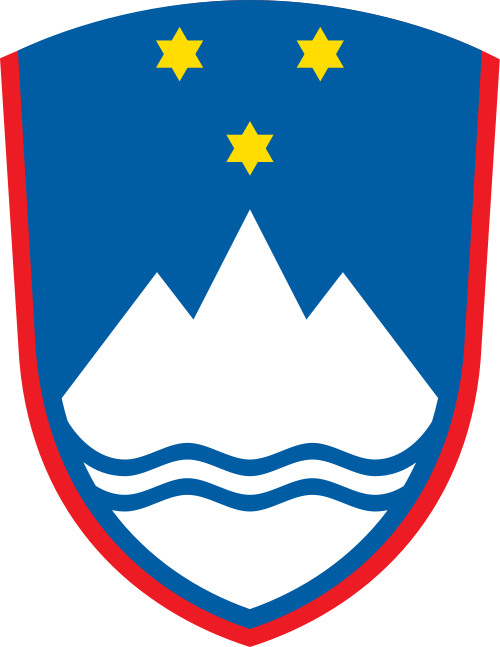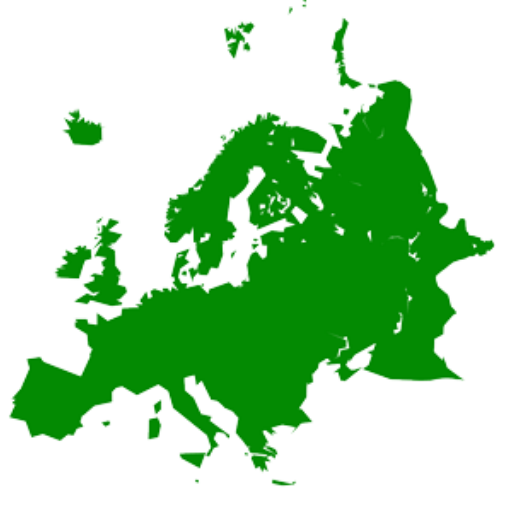German — Chinese


Slowenien (slowenisch Slovenija, amtlich Republik Slowenien, slowenisch Republika Slovenija) ist ein demokratischer Staat in Europa mit rund 2 Millionen Einwohnern, der an Italien, Österreich, Ungarn und Kroatien grenzt. Hauptstadt und zugleich größte Stadt des Landes ist das zentral gelegene Ljubljana (deutsch Laibach). Weitere wichtige Städte sind Maribor, Celje, Kranj, Koper und Velenje. Im Jahr 2004 trat Slowenien der EU und der NATO bei, 2007 auch der Eurozone. Das Land ist eine demokratisch verfasste parlamentarische Republik.
Das Gebiet des heutigen Sloweniens wurde Anfang des 6. Jahrhunderts von den Slawen besiedelt, die das Fürstentum Karantanien gründeten. Im Jahr 788 eroberten die Franken das Gebiet und die Bistümer Aquileia und Salzburg missionierten es. Im 11. Jahrhundert wurde das Land in das Heilige Römische Reich eingegliedert und 1364 zum Herzogtum Krain erhoben. In den folgenden Jahrhunderten geriet das Territorium an die Habsburgermonarchie. Nach der Auflösung Österreich-Ungarns 1918 ging das vormalige Kronland im neu gegründeten Königreich Jugoslawien auf. Nach dem Ende des Zweiten Weltkrieges existierte Slowenien als Teilrepublik im sozialistischen Jugoslawien. Nach der Unabhängigkeitserklärung am 25. Juni 1991 und dem 10-Tage-Krieg wurde Slowenien ein eigenständiger Nationalstaat und am 22. Mai 1992 eigenständiges Mitglied der UNO.
Slowenien ist heute das wohlhabendste Land des ehemaligen Jugoslawiens. Es verzeichnet sowohl im Bezug auf die politische als auch die wirtschaftliche Transformation überdurchschnittlich hohe Erfolge.[4] Im Index der menschlichen Entwicklung belegte Slowenien 2019 Rang 24 von 189 Ländern weltweit.[5]
スロベニア共和国(スロベニアきょうわこく、スロベニア語: Slovenija: ![]() [sloˈveːnija])、通称スロベニア、スロヴェニアは、中央ヨーロッパに位置する国で[1]、主要なヨーロッパの文化や交易の交差路である[2][3]。
[sloˈveːnija])、通称スロベニア、スロヴェニアは、中央ヨーロッパに位置する国で[1]、主要なヨーロッパの文化や交易の交差路である[2][3]。
スロベニアは西はイタリア、北はオーストリア、南や南東はクロアチア、北東でハンガリーとそれぞれ国境を接している。[4]国土面積は20,273km2 (7,827 sq mi)で、人口は205万人を擁する。[5]議会制共和国で、欧州連合や北大西洋条約機構の加盟国である。[6]スロベニアではアルプス山脈とディナル・アルプス山脈、地中海のアドリア海に沿った少ない海岸部分のヨーロッパの4つの大きな地理的な部分が接している。[7][8] スロベニアの国土はモザイク状の構造で多様性に富んだ景観や[8]、生物多様性があり[9][10]、この多様性は自然の特質と長期の人間の存在による。[11]主に丘陵地の気候[7]であるが、スロベニアの国土は大陸性気候の影響を受け、プリモルスカ地方は亜地中海性気候に恵まれており、スロベニア北西部では高山気候が見られる。[12] スロベニアはヨーロッパの国の中でも水が豊かな国の一つで[13]、密度が高い河川や豊かな帯水層、かなりのカルスト地形(クラス地方はカルストの語源)の地下水流がある[14]。スロベニアの国土の半分以上は森林に覆われている[15]。スロベニアの集落は分散しており、一様ではない[16]。
スラヴ語派やゲルマン語派、ロマンス諸語、フィン・ウゴル語派などの言語や文化のグループはスロベニアで接し領域は均質でないが[17][18][19] 、人口数ではスロベニア人が優勢である。[20]スロベニア語はスロベニアの唯一の公用語であるが、イタリア語やハンガリー語などは地域の少数言語となっている。スロベニアの大部分は宗教と分離しているが[21]、文化やアイデンティティの面ではカトリック教会やルーテル教会の大きな影響を受けている。[22] スロベニアの経済は小規模で、輸出志向型工業化の経済[23] でありその後の国際的な経済情勢に大きく影響を受けている。[24]スロベニアの経済は2000年代後半に始まった欧州経済危機により厳しい痛手を負っている。[25] 経済の主要な分野は第三次産業で、工業や建設がそれに続く。[26]
多くのスロベニア人がスポーツ界で成功しており、特にウィンタースポーツ、ウォータースポーツ、登山、耐久性が要求されるエンデュランススポーツで顕著である。[27]
Slovenia (/sloʊˈviːniə, slə-/ (![]() listen)[10][11] sloh-VEE-nee-ə; Slovene: Slovenija [slɔˈʋèːnija]),[12] officially the Republic of Slovenia (Slovene:
listen)[10][11] sloh-VEE-nee-ə; Slovene: Slovenija [slɔˈʋèːnija]),[12] officially the Republic of Slovenia (Slovene: ![]() Republika Slovenija (help·info),[13] abbr.: RS[14]), is a country located in Central Europe at the crossroads of main European cultural and trade routes.[15][16] It is bordered by Italy to the west, Austria to the north, Hungary to the northeast, Croatia to the southeast, and the Adriatic Sea to the southwest.[17] Slovenia covers 20,271 square kilometers (7,827 sq mi) and has a population of 2.095 million.[18] One of the successor states of the former Yugoslavia, Slovenia is now a parliamentary republic[19] and member nation of the European Union, United Nations, and NATO.[20] The capital and largest city is Ljubljana.[21]
Republika Slovenija (help·info),[13] abbr.: RS[14]), is a country located in Central Europe at the crossroads of main European cultural and trade routes.[15][16] It is bordered by Italy to the west, Austria to the north, Hungary to the northeast, Croatia to the southeast, and the Adriatic Sea to the southwest.[17] Slovenia covers 20,271 square kilometers (7,827 sq mi) and has a population of 2.095 million.[18] One of the successor states of the former Yugoslavia, Slovenia is now a parliamentary republic[19] and member nation of the European Union, United Nations, and NATO.[20] The capital and largest city is Ljubljana.[21]
Slovenia has a mostly mountainous terrain[22] with a mainly continental climate,[23] with the exception of the Slovene Littoral, which has a sub-Mediterranean climate, and of the Julian Alps in the northwest, which have an Alpine climate.[24] Additionally, the Dinaric Alps and the Pannonian Plain meet on the territory of Slovenia. The country, marked by significant biological diversity,[25][26] is one of the most water-rich in Europe,[27] with a dense river network, a rich aquifer system, and significant karst underground watercourses.[28] Over half of the territory is covered by forest.[29] The human settlement of Slovenia is dispersed and uneven.[30]
Slovenia has historically been the crossroads of Slavic, Germanic, and Romance languages and cultures.[31][32][33] Ethnic Slovenes make up more than 80% of the population.[34] The South Slavic language Slovene is the official language throughout the country. Slovenia is a largely secularized country,[35] but Catholicism and Lutheranism have significantly influenced its culture and identity.[36] The economy of Slovenia is small, open and export-oriented[citation needed] and is thus strongly influenced by the conditions of its exporting partners' economies. This is especially true with Germany, Slovenia's biggest trade partner.[37] Like most of the developed world, Slovenia was severely hurt by the Eurozone crisis beginning in 2009, but started to recover in 2014.[38][39] The main economic driver for the country is the services industry, followed by manufacturing and construction.[40]
Historically, the territory of Slovenia has formed part of many different states, such as: the Roman Empire, Byzantine Empire, Carolingian Empire, the Holy Roman Empire, the Kingdom of Hungary, the Republic of Venice, the Illyrian Provinces of the First French Empire, the Austrian Empire and Austro-Hungarian Empire. In October 1918, the Slovenes exercised self-determination for the first time by co-founding the State of Slovenes, Croats and Serbs. In December 1918 they merged with the Kingdom of Serbia into the Kingdom of Serbs, Croats and Slovenes (renamed the Kingdom of Yugoslavia in 1929).
During World War II (1939–1945) Germany, Italy, and Hungary occupied and annexed the territories included in today's Slovenia (1941–1945), with a tiny area transferred to the Independent State of Croatia, a Nazi puppet state.[41] In 1945 Slovenia became a founding member of the Federal People's Republic of Yugoslavia, renamed in 1963 as the Socialist Federal Republic of Yugoslavia. In the first years after World War II this state was initially allied with the Eastern Bloc, but because of the Tito-Stalin split in 1948 it never subscribed to the Warsaw Pact and in 1961 became one of the founders of the Non-Aligned Movement.[citation needed]
In June 1991, after the introduction of multi-party representative democracy, Slovenia became the first republic that split from Yugoslavia and became an independent sovereign state.[4] In 2004, it entered NATO and the European Union; in 2007 became the first formerly communist country to join the Eurozone;[42] and in 2010 it joined the OECD, a global association of high-income developed countries.[43] Slovenia is a developed country with an advanced, high-income economy[44][45] and a very high Human Development Index.[46] It ranks 12th in the inequality-adjusted human development index.
La Slovénie, en forme longue la république de Slovénie, en slovène : Slovenija et Republika Slovenija, est un pays d’Europe centrale au carrefour des principales cultures européennes. Sa capitale est Ljubljana. Le pays partage ses frontières avec l'Italie à l'ouest, l’Autriche au nord, la Hongrie à l'est-nord-est et la Croatie au sud-est. La Slovénie est également bordée par la mer Adriatique au sud-ouest. Comptant environ 2 millions d'habitants, la Slovénie est un État membre de l'Union européenne.
Historiquement, le territoire de la Slovénie a intégré de nombreux États différents : l'Empire romain, l'Empire byzantin, l'Empire carolingien, le Saint-Empire romain germanique, le Royaume de Hongrie, la République de Venise, le territoire des Provinces Ilyriennes du Premier Empire français, l'Empire d'Autriche, l'Empire austro-hongrois et enfin la Yougoslavie.
C'est en octobre 1918 que les Slovènes ont cofondé l'État des Slovènes, des Croates et des Serbes. Cette monarchie sera appelée royaume de Yougoslavie à partir de 1929. Pendant la seconde guerre mondiale, la Slovénie est démembrée et annexée par l'Allemagne, l'Italie et la Hongrie. Une toute petite part est donnée à la Croatie, État fantoche nazi. En 1945, la Slovénie devient un membre fondateur de la République fédérative socialiste de Yougoslavie. Dans les premières années de son existence, cet État était allié au bloc de l'Est, dominé par l'Union soviétique, bien que n'ayant pas intégré le Pacte de Varsovie. En 1961, la Yougoslavie devient un des fondateurs du mouvement des non-alignés.
En 1991, après l'introduction du multipartisme et de la démocratie, la Slovénie est devenue la première république à faire sécession de la Yougoslavie en devenant un État souverain indépendant. La République de Slovénie entre dans l'Union européenne et l'OTAN en 2004. En 2007, le pays devient le premier ancien pays communiste à intégrer la zone euro.
La Slovénie est aujourd'hui un pays développé à revenu élevé, avec un indice de développement humain élevé, se classant 13e dans l'indice de développement humain ajusté aux inégalités.
La Slovenia, ufficialmente Repubblica di Slovenia (in sloveno Republika Slovenija, in ungherese Szlovén Köztársaság), è uno Stato sovrano dell'Europa centrale, confinante a ovest con l'Italia (Friuli-Venezia Giulia), a nord con l'Austria, a est con l'Ungheria e la Croazia a sud, affacciandosi a sud-ovest sul mare Adriatico (golfo di Trieste). La sua capitale è Lubiana.
Dal 1º maggio 2004 la Slovenia è membro dell'Unione europea e la valuta nazionale, dal 1º gennaio 2007, è l'euro, che ha sostituito il tallero sloveno, adottato nel 1991 dopo l'indipendenza; in precedenza la moneta era il dinaro iugoslavo. Nella regione istriana del Paese vive una comunità autoctona italiana, mentre nella zona di confine orientale si trova quella ungherese; crescente è l'immigrazione serba e bosniaco-erzegovina. La Festa nazionale slovena, così come quella croata, ricorre il 25 giugno, anniversario della dichiarazione d'indipendenza del 1991 dalla Repubblica Socialista Federale di Iugoslavia.
Eslovenia, oficialmente República de Eslovenia (en esloveno: ![]() Republika Slovenija (?·i) antigua Carantania) es uno de los veintisiete estados soberanos que forman la Unión Europea. Limita con Italia al oeste; con el mar Adriático, al suroeste; con Croacia al sur y al este; con Hungría, al noreste; y con Austria, al norte. Tiene una población de 2 080 908 habitantes a fecha del 1 de enero de 2019.5 La capital y ciudad más poblada es Liubliana.
Republika Slovenija (?·i) antigua Carantania) es uno de los veintisiete estados soberanos que forman la Unión Europea. Limita con Italia al oeste; con el mar Adriático, al suroeste; con Croacia al sur y al este; con Hungría, al noreste; y con Austria, al norte. Tiene una población de 2 080 908 habitantes a fecha del 1 de enero de 2019.5 La capital y ciudad más poblada es Liubliana.
La actual Eslovenia se formó el 25 de junio de 1991 al independizarse de Yugoslavia, tras un conflicto armado relativamente corto denominado Guerra de los diez días (que fue la primera guerra de la disolución de Yugoslavia), en la que se opuso al ejército de la antigua federación yugoslava. Por aquel entonces, ya era el país más desarrollado de aquella federación.
Cultural e históricamente, Eslovenia gravita hacia Italia, Austria y Alemania (cultura católica y protestante). A lo largo de la historia, Eslovenia siempre fue parte de los imperios, reinos, etc. de Europa central y nunca ha sido parte de los cuerpos políticos que gobernaron la mayoría de los Balcanes, por ejemplo del Imperio Romano de Oriente (iglesia ortodoxa) y el Sultanato de Turquía (islam).
En 2004 se adhirió a la Unión Europea.6 Eslovenia se integró en el euro el 1 de enero de 2007, y en el área de Schengen, en 2004. Ya en 1993 se había adherido al Consejo de Europa y desde julio de 2010 forma parte de la OCDE.
Слове́ния (словен. Slovenija), официальное название — Респу́блика Слове́ния (словен. Republika Slovenija) — государство в Южной Европе. Территория — 20 236 км², население — 2 089 310 человек (июль 2019 год)[8]. Занимает 144-е место в мире по численности населения и 150-е по территории.
Столица — Любляна. Государственный язык — словенский.
Унитарная, парламентская республика. В марте 2020 года пост премьер-министра занял Янез Янша[9].
Административное деление: 210 общин, в том числе 11 городов.
Расположена в предальпийской части Балканского полуострова. Омывается водами Адриатического моря с юго-запада. На западе граничит с Италией, на севере — с Австрией, на северо-востоке — с Венгрией, на востоке и юге — с Хорватией.
Индустриальная страна с динамично развивающейся экономикой. Объём ВВП за 2011 год составил 58,979 миллиарда долларов США (около 29 179 долларов США на душу населения). Денежная единица — евро.
Независимость страны провозглашена 25 июня 1991 года. 29 марта 2004 Словения вступила в НАТО, а 1 мая 2004 года вступила в Европейский союз.





 Geography
Geography
 Mitglieder der NATO
Mitglieder der NATO
 States of Europe
States of Europe



